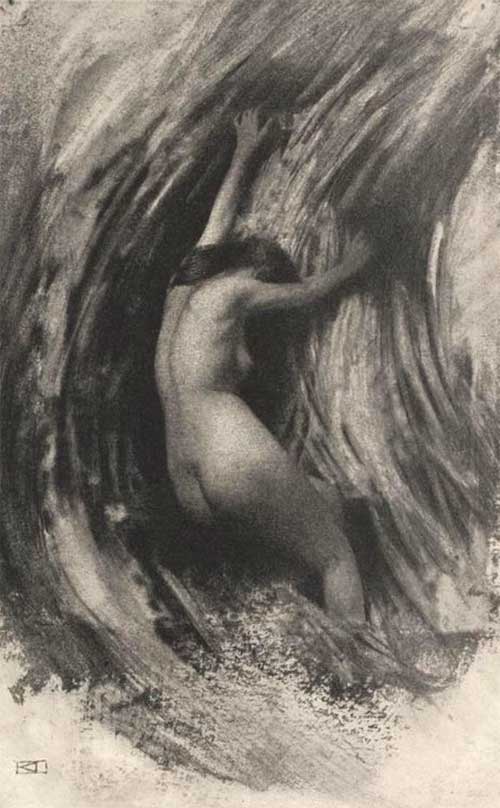
When we think about alternative processes in photography, what comes to our minds, is a sort of brownish prints showing cloudy images, because they were produced the way it was in the infancy of photography. Many people associate this kind of roughness to constrains given by early phases of film and printing development. But actually, that was not the case when alternative processes, as we call them today, became popular. First, it was not in the infancy of photography, and second, it was all purposely made that way. This imagery stems from the work of the so called “pictorialists”. They were photographers, many of them amateurs, who wanted to register images in a way that they would be considered as art. The above image, Strugle, made by Robert Demachy in 1904, is a perfect instance of pictorialism in photography. The pictorialists were in the spotlight by the end of the XIXth and beginning of XXth century and after that, this kind of goal, became sort of kitsch. Not due to the processes themselves, but rather the themes that were also very much borrowed from painting and more than often from symbolist art. Their counterparts advocated the “straight” photography. It is not easy to tell what “straight” means in that context. Approximatively, we can say that it calls for the maximum depth of field one can get, no tricks in too much shifting in tonal values, textures and no manual work on negative and print: we could put it like letting only light and chemistry do the job. This faithful rendering of reality took as its subject always real people and real places – no point in produced sceneries. Whatever we say or think about the doubtful purpose that imitation bears in itself, pictorialism actually paved the way to photography to be considered as art. For the pictorialists, just reproduce what they had before their eyes, would be a mechanical concern and not art at all. They used the new media to yield results similar to what art was. The “straight” ones, envisaged that photography could have its on language with no need to simulate brush strokes, textures or whatever characteristic in painting. They had a point in that, and indeed emancipated photography as a complete and self-assured symbolic form as we know it today, including photography as art, amongst the several roles it plays in our culture. For that purpose, a previous step into that direction was necessary and that was the opening of art galleries, and art collections, to the new technique. That is something we owe very much to the pictorialists.
At the very beginning of photography, 1840 or so, there were two different processes of getting a permanent image captured by lenses: daguerreotypes and talbotypes (or otypes, and yet calotypes), each one bearing the inventor’s name despite the fact that photography was actually the result of many many contributions. The one of Louis Daguerre consisted of printing in a silver plate polished like a mirror. The final print, after a chemical treatment, was the actual plate used in the camera. The result was an image so sharp and rich in details that the limit seemed to be our eyes and not the picture. The other one, developed by William Henry Fox Talbot, created a negative/positive process that used a matrix (negative) of waxed paper in the camera, to be afterwards printed in the final exhibition copy. In the latter, most of the details were lost. Tonal values were compressed accentuating contrast.
In both cases the processes of image making was sought at first as a mechanical thing. It was nature reproducing itself through light. It was a recording tool for portraiture, documenting, education, scientific and military purposes with more speed and fidelity than drawing or engraving.
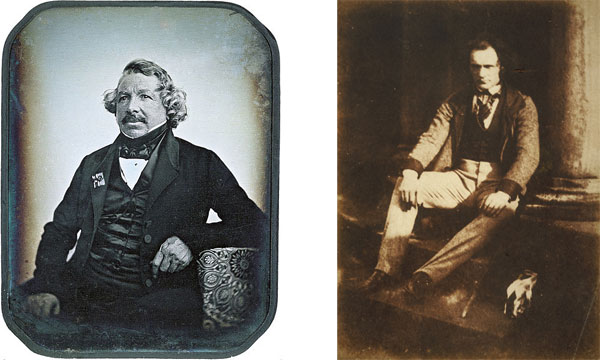
Deguerreotype (featuring Louis Daguerre himself) and Talbotype – Both from 1844
If Daguerre’s method showed the fine details and the negative/positive, was not as good on that point, the latter took its strength from the possibility of reproduction and was adopted ubiquitously by photographic industry . The coarse image of talbotypes and affined was something to be improved and indeed it was with the glass plate. But, rather than a setback, some people started to see that handicap as a possibility for artistic expression. We must remember that academic painting was in a dead end, realism and romanticism were gaining impetus at that time. The former, strove to showcase the beauty of ordinary life, lived by common people, the latter did the same towards the sentiments and perceptions of oneself. Photography, as it was first received and understood, was the perfect tool to record daily life and things as they were. It was the realistic image par excellence. When it comes to a more departed or symbolic interpretation, it didn’t take too long for artists to realize that the coarse finish of Talbotypes, the use of negatives that could be altered, manipulated, assembled together, could constitute a new method to produce images with artistic potential using a known and well stablished vocabulary from a long tradition in painting and drawing. Many painters experimented photography and many photographers were formerly painters.
Roger Fenton (1819-1869) was a photographer whose career fully embodied that ambiguity. Coming from a very wealthy family, he studied art in Oxford. Decided to become a painter he continued his studies with important artists like Paul Delaroche in Paris. Visiting the Great Exhibition in Hyde Park in London (1851) he learnt about photography and right away returned to Paris where he went after Gustave Le Gray to get acquainted with a modified calotype technique. In 1853 he founded a Photographic Society in London, the one that would become the Royal Photographic Society. As a photographer he travelled documenting architecture, people and landscapes. One of his very important assignment was the Crimea War from which, in 1855, he made about 350 negatives. No “action” photographs as the exposure times were still very long, but anyway, he was the very first war photographer, a subject that would evolve to a whole category. Fenton was unparalleled in England in the 1850’s and experimented in all genres, architecture, landscape, portraiture, still life, reportage, and tableau-vivant. That broad and uncompromising view of the medium would tend, during the decades to come, to assume a more specialised stance. Even though a large part of his production was about documenting a scene, cases in which the subject is king and the photographer is there more to register it as accurately as possible, Fenton fought to have photography seen as fine-art instead of a simple craft dependent only on training and equipment.
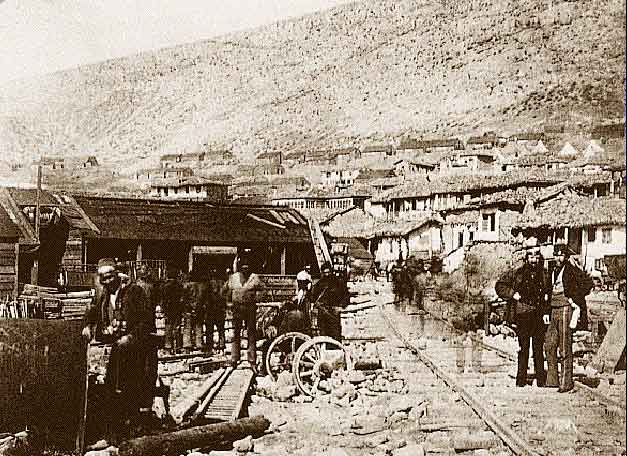
Crimea – 1855- Roger Fenton
That eclecticism would rarefy very much as we approach the turn of the century. From camera, lenses and processes side, there was a larger offer that would make photography more popular and optimised to specific customers and genres. From photographer side there was a boom of serious and very engaged amateurs, not taking orders and commissions, but doing it just for the pleasure of doing it. In what concerns professionals, they were of course market driven, and there was a demand for whatever a camera could capture. In those cases the commitment was for a faithful image, depicting the subject like it would be before our eyes. What was, by the way, completely in line with the vocation and reason to be of photography. To that demand, the industry responded and evolved in means to take it to perfection.
The lead in experimentation, in departures from reality, was left more to amateurs and artists trying photography. From subject choices and rendering, there was an implicit intention in making images more symbolic and elusive. Julia Margaret Cameron (1815-1879) is a canonical instance of that spirit. She took her first pictures when she was already 48 years old with a camera received as a present. Cameron used the media to do exactly what its immediatism would theoretically ever reject: make things that are “real” look far and belonging to another world. That is the formula we find in Romanticism, but not the one people expected from a photograph. So her group of admirers was very restrict at her time. Later her evanescent figures, from the bible or mythology, became very influential and imitated by pictorialist photographers.
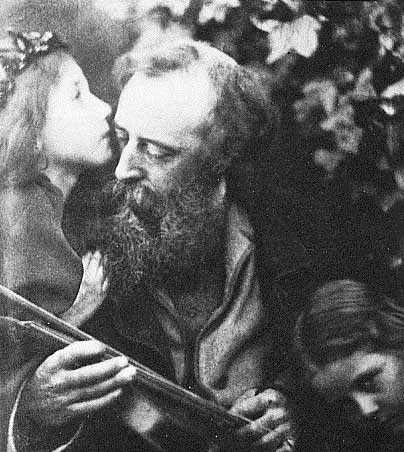
Julia Margaret Cameron – British – 1868
What we can say is that from its very beginning photography had that two folded approach. Calotypes made by David Octavius Hill and Robert Adamson, already in the 1840’s, reminded people of some features in Rembrandt’s portraits. Fenton’s landscapes were related to Constable’s paintings. Some images were ideal because they were like a clean window through which we could perfectly see its subject. But that was not associated with an artistic or genius endeavour but rather a good craftsman photographer at work. Other images, working as a dirty window or having irregular glasses, presented the subject coarse and altered. The artistic content or intention was perceived, sometimes that was praised and more than often rejected. Much latter, the pictorialists took the second option even further and made like a step back in image making. By the end of the XIX century, when sharpness and large tonal values, so much sought after by the decades that followed the invention of photography, was somehow achieved, pictorialists advocated the use of processes that would give away those accomplishments. Endless discussions took place to establish what would be the realm of photography, what would be the role and status of a photographer. It was clear that the technique had a role to play, like in any form of art, like in any form of engineering, the question was about setting boundaries between the two spheres and define a “correct way” to capture and print images that would belong unequivocally to one or another.
One very revealing point of view about the meaning and intentions that could assume photographic representation, was pointed out by Ian Jeffrey in his “Photography, a concise history”. That is David Octavius Hill’s assessment of his own work in a letter he wrote in 1848. Talking about how the “shortcomings” of Talbot’s process in rendering details, led his images to be very often compared to Rembrandt, Hill wrote: “The rough and unequal texture throughout the paper is the main cause of the calotype failing in details before the Daguerreotype…and it is the very life of it. They look like the imperfect work of man… and not the much diminished perfect work of God.”

Professor George Moir – David Octavius Hill and Robert Adamson – 1843/1847
Salt print from Calotype negative
Thinking of art history, we have to recognise that this kind of paradox was not new at all in image making. The work of God represented through extreme detailing of each and every object, with its very own texture, color and shape was the aim of gothic art at the end of middle age and remained a hallmark of northern European painting until almost the XIX century. It was a gesture of awe towards this world as a supreme work of God. It was a matter of respect and humility do not skip any single blade of grass or any brick in a wall. Everything has a name and a role, a reason to be, and the image must show that as a unit. Specially in today’s Holland and Belgium, painting with this descriptive approach was developed to its extremes. Every brushstroke in a Van Eycks’ belongs to something clearly identifiable.

The Lucca Madonna – Jan van Eyck – 1436
When David Octavius Hill says that Daguerreotypes show a diminished version of God’s work, we can consider he is referring to the automatism of the medium, that means, the fact that light is the real and only painter there, and besides the unseen before level of details provided by daguerreotypes, exactly due to that automatism, those copies showed no devotion. It is the imperfect work of man that brings life to representation, brings value and revelation. And it is on the imperfection of his images that resides his admiration and respect towards God’s creation, but also independence.
To continue with our analogy, when we leave the medievals, when the “work of man” clearly articulates its claim for a share in creation, Leonardo came with the “sfumatto”, a kind of soft focus effect, like the one produced by the waxed paper negative in Talbotypes.
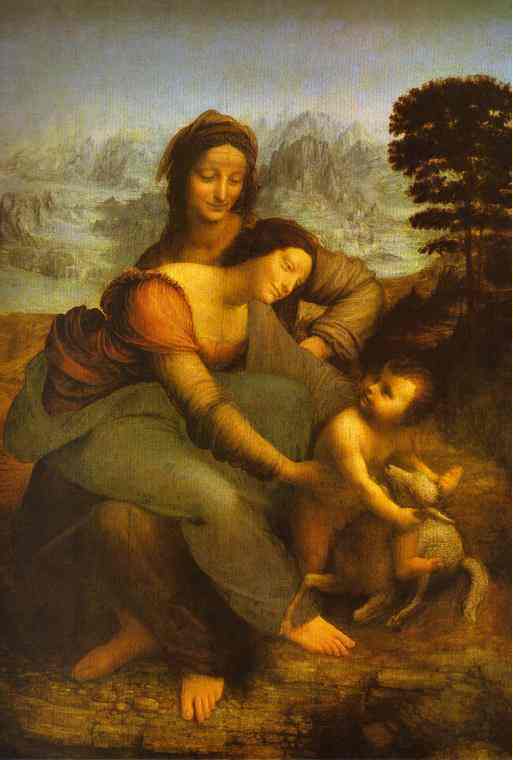
Virgin and child with Saint Anne – Leonardo da Vinci – 1502/1516
The sharpness of a painted or photographed image, and also lighting, contrast, composition, perspective, colours, lines and volume are the set of resources that image makers have to create perceptions somehow linked to a previous experience, registered in viewers’ mind, and somehow new, proposed by the artist. The same way oil painting is a different tool-box compared to frescoes or illuminated books, so does photography. But once the image is there our brain decodes these stylistic effects in accordance with the current conventions in each culture. A sfumatto or a calotype will always be closer to the “work of man” and a sharp and detailed image will be always closer to the depicted subject it refers to, either we call it the work of god or just reality.
As the talbotypes and derivatives evolved to the glass and later to negatives in plastic material, paper negatives were rapidly abandoned. Other processes like gum dichromate, bromoil, cyanotypes, gumoil, etc took over the foreground as the processes for those who wanted deliberatively interfere in the image making having them with less realism. Having an array of possibilities to choose from, in regards to processes, subject, framing, photographers discussed what would be the right way to go if they were to make photography an art form. The same way painting evolved from craftsmanship to mental work, photography had to perform a parallel transformation. From a mechanical reproduction process to an artistic creation.
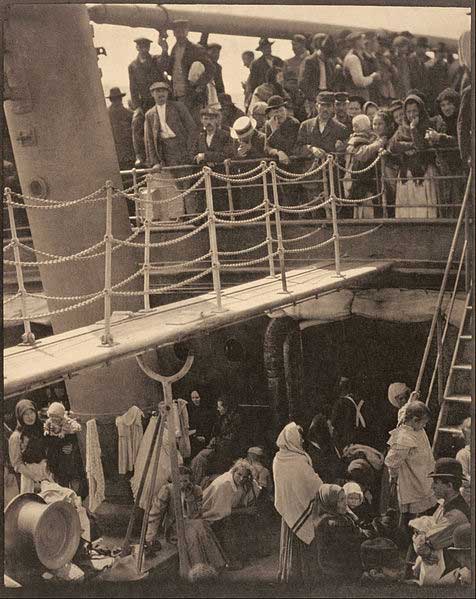
Alfred Stieglitz – The Steerage – 1915
The straight photographers had the same ambition but figured the way in creating a new language that was not an attempt to emulate painting nor in the finish and neither in themes and composition. That was the case of Alfred Stieglitz, formerly supporting the pictorialism argument, that photography, in order to be art, should look like art, started to realise that it could evolve to function as art using its own means. The Steerage, a picture taken in 1915, represented for him a turning point to that conclusion. He was right in the sense that: yes! it works. On the other side, the pictorialists used to say that even in the most candid picture there is already a lot of manipulation when we choose film, framing, contrast, paper and, at the end, there is nothing like “straight photography” at all. So, once we are the creators in any case, why not go all the way and scratch the negative, paint over the print, bleach it or whatever if we feel like doing it? They were right too. Many artists, with no pictorialism whatsoever in mind, did and have done this kind of interference in photographic image. Straight is also artificial.
When Kodak launched the 35mm film in day loading cartridges in 1934 they named the compact cameras built to use them, Retina. It was all about the automatic register of immediate reality. Far from the made up pictures from the pictorialists phase impregnated with symbolism. In 1939 Kodak published in France, an amateur’s handbook called La photographie petit format. In the forewords it states clearly their commitment to an emancipation of the medium: “At the beginning of the century avant-garde photographers strove to copy painting saying: why photography can’t be as art? Obsessed to prove their artistic value, our predecessors, printed images that looked like bad black and white canvas. After these mediocre attempts, photography came out of the limbus. It evolved in a new sense created by and for it. We don’t ask today if it is as good as painting. It is different, and doesn’t ask outside its own nature its means for perfecting”.
The techniques used by pictorialists became later to be known as ‘alternative processes’. It has been quite a time already when it turned sort of inadequate to present oneself as a “pictorialist”. Alternative coined its meaning in opposition to the industrialized silver emulsion used in ‘normal’ black and white or colour photography. In this way, alternative embeded also an idea of reaction to the mainstream, large corporations, monopolies and the like. Today we can, with a very light risk of going too fast, list film in general in the “alternative processes” category, for mainstream is by large in the digital territory where cameras are sharing attention with mobile phones. Maybe in a short period in time, even using dedicated cameras will be sort of alternative.
We can look at those substitutions as just the logic of progress. But it is not total nonsense to highlight one potentially disruptive step change made with the introduction of digital technology. From Daguerre and Talbot till the last emulsions of the XXth century, we can figure a continuum, a constant improvement of the same basic idea. As digital imaging invades the scene the concept of a concrete original tends to vanish, because a copy in a hard disk has absolutely the same nature of the file in a memory card. To live with that, we have to accept a concept like “many originals” or no original at all. A file is for an image what a score is for music: something to be played by musicians and their instruments. Images are now recipes, strings of zero/one, kept as formula and reproduced anywhere. A negative is an object, a digital file is information, is something abstract, something that is not and can only become. Will that change our relation to images? Difficult to guess. Maybe not as viewers, because at this point what really matters is the subject, aesthetics, style, conventions and all that concerns reception and interpretation, elements and processes. Those are more related to customs or let us put it as culture, to use just one word that embraces it all. But at the image making phase, the photographer himself, his relation to his output can’t be the same. I am not talking here about ontological concerns of materiality. The digital, being like a score to be played, brings so unprecedented flexibility that it can be annoying and even scaring in some cases. A negative also has to be like “played”, if we think of printing in that sense, but the freedom provided by a raw file in post-production is so gigantic compared to darkroom practice that it can go as far as playing the Beethoven’s 5th in a hip-hop beat. It is incredibly easy, in the XXIst century, do become a digital pictorialist if you want, some artistas are actually doing it, one can even pick the epoch and style he likes better. There are Brueghels and Vermeers in the photo fairs and art galleries out there. In that sense, my personal observation, that is nothing more than a hypothesis, for this is all very new, is that the main attraction of contemporary photographers towards alternative processes is exactly the far narrower degree of freedom it provides.
The shared materiality and nature of all silver prints ever made is a constrain that is embraced with reassurance. The unforgivingness of darkroom wrongdoings (no ctrl z) is a challenge taken with pride. The consciousness of keeping a tradition, reenacting, rescuing the bygone practices, is an utterance of respect to our ancestors. Like a ritual that takes its strength from being always the same in its form and ever revealing in its essence, those images produced by old methods, so intransigently concrete, are still, to our current state of mind, something that make us feel good. What sustain the alt-processes sect, is not at all related to image quality, digital is better. The strength and attraction of alternative processes in photography, when it comes, comes from their very inevitable constrains and limitations.
***
This is a timeline with the main processes for negatives and prints in B&W and color. It gives an idea of what was available in each period.
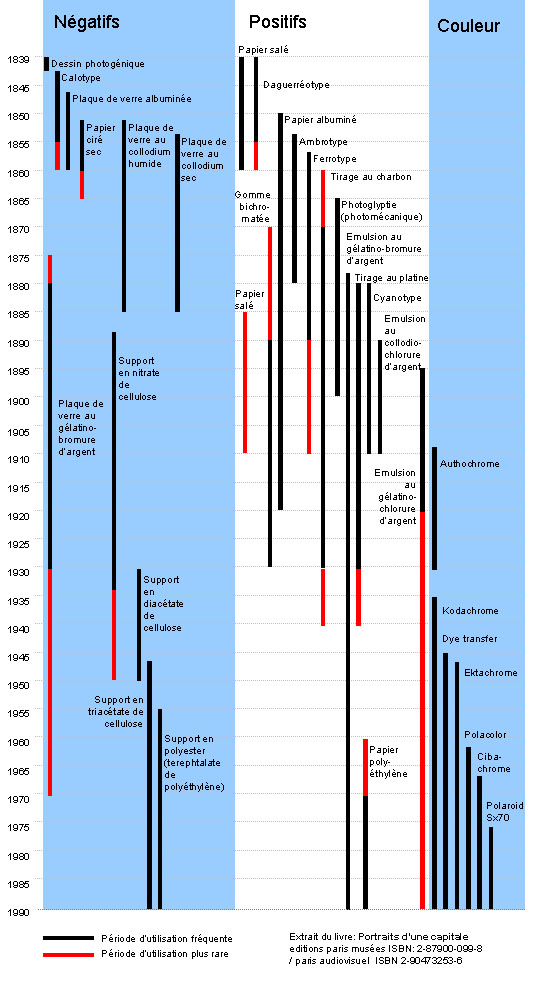
What an incredible article! Thank you for opening my eyes to the wonderful history of photography.